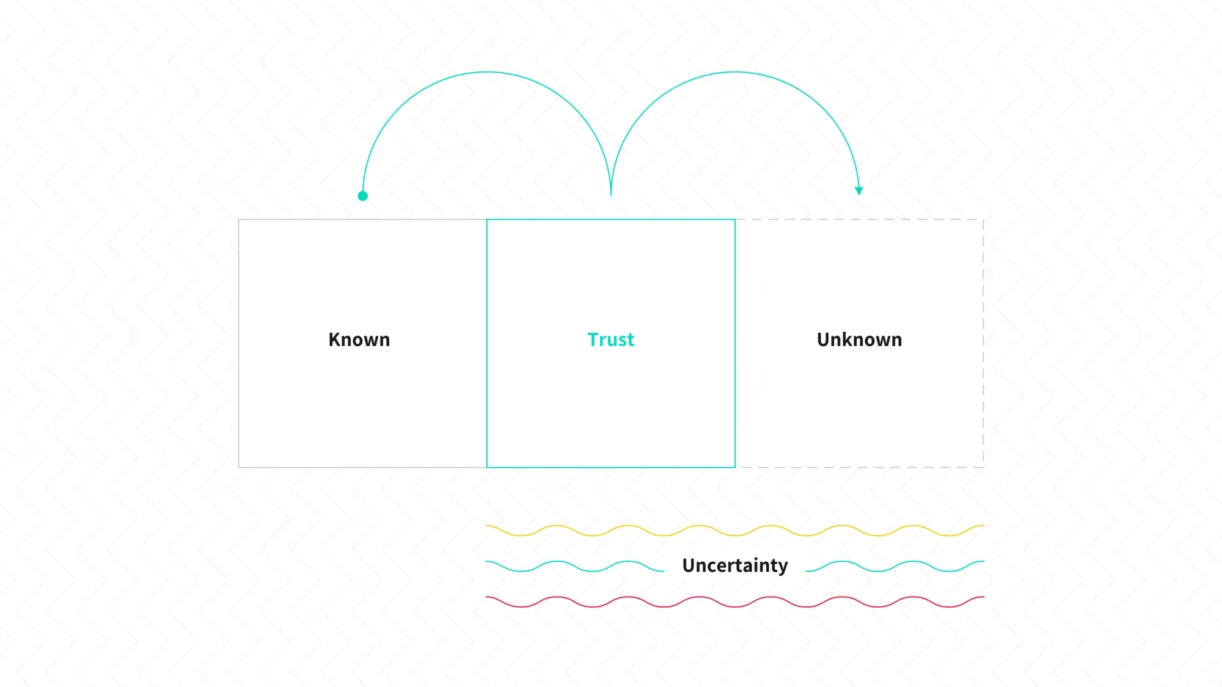Borders are fluid and no longer play a role when it comes to starting new relations. Mobile technology and the explosive growth of innovative online products and services connected consumers with companies all over the world. Sounds pretty romantic, right?
It definitely is, but the story has a downside: The limitations of mobile technology are becoming more apparent. Think of all the cases of data abuse en data leaks. Consumers are more aware of limitations like this and it made them sceptic. The holy grail in this story? Trust. Consumers will only consider interacting with you and following you when they trust you. But what does trust mean?
Trust is complex
We do not know many people that articulated the importance of trust in the digital world more accurately than Rachel Botsman did. She argues that we unfairly talk about trust in a one-dimensional way, while in reality, trust is an extremely complex concept. The complexity of trust has much to do with context. Because with what should customers trust you? “I trust that Amazon delivers my package in time, but I do not trust them with my data” thus Rachel Botsman.

The trust-leap
You can look at trust as a bridge from the known to the unknown, over an ocean of uncertainty. Rachel Botsman calls the concept of crossing this bridge, a ‘trust-leap’ – a ‘secure and safe relation with the unknown’. Only when you really trust a company, product or service will you step into the unknown with security. In other words: We put our trust in something or somebody to take a risk (with for instance our money, data or health) because we believe it’s safe. This makes trust a currency.
“Money is the currency for transactions. Trust is the currency for interactions.”
Rachel Botsman uses Facebook as an example to illustrate this. Facebook still makes an assload of money while we trust them less. If the previous paragraph is true, how would we explain this? Easy: we still make transactions with them, but Facebook might very well lose the capability of interacting and connecting with us and taking us to the unknown. We’ll be less inclined to try new products and services of the company, because we simply don’t trust them enough. In other words: innovation has little value without trust, because people will not follow if they don’t trust you.

Building trust: the ingredients
So how can you build trust? When working on (re)gaining trust, many people fall back on an old reflex: transparency. The notion that increasing transparency of your business or product leads to more trust, is a common misconception.
“If people trust you, the need for transparency disappears.”
Compare it to a romantic relationship: the need for control and transparency often means that there’s little to no trust. This results in a bad relationship. In good relationships based on trust, one doesn’t have to know about the other what he or she does all the time. There is no need for transparency. So, transparency is a plaster on the wound of a lack of trust. It doesn’t really heal it.
Botsman defined two ingredients that people (unconsciously) use to assess to what extent you can be trusted as a company. People look at how you do things and why you do those things.
How you do things as an organization exists of two pillars:
- Competence – Can I believe that they have the skills, experience, knowledge, and resources to really do what they say they’ll do?
- Reliability – Can I depend on them? Are they responsive? Is their behavior consistent
The assessment of why you do things can also be divided into two pillars:
- Empathy – How much do they care about what they do? How much do they care about me?
- Integrity – Do their words align with their actions? Are their intentions the same as mine?

Where can I start?
The challenge is to build the ingredients of trust into your business, product, or service. We have three quick tips to put you on the right path:
- Take a critical look at your business. What role plays trust in the relationship you have with your customers? How does your own company score on competence, reliability, empathy, and integrity?
- Involve the topic of trust when doing customer research. What do customers say? How do they look at certain interactions and do they align with their expectations? Do they trust your product enough to interact with it?
- Put the ingredients of trust right next to new value propositions. How does your new product or service answer to the ingredients of trust?
Do you want to exchange thoughts on the role trust plays in innovations? Feel free to hit us up – we are curious about your ideas. Do you want to read more? Then you can move back to our ‘reads’ section.


